News tips
and press releases may be sent to editor at hollywoodinvestigator.com. All submissions become property of the Hollywood Investigator and deemed for
publication without compensation unless otherwise requested. Name
and contact information only withheld upon request. Prospective reporters should research our Bookstore.
|
Home
About
Us
Bookstore
Links
Blog
Archive
Books
Cinema
Fine Arts
Horror
Media & Copyright
Music
Public Square
Television
Theater
War & Peace
Affilates
Horror Film Aesthetics
Horror Film Festivals
Horror Film Reviews
Tabloid Witch Awards
Weekly Universe
Archives


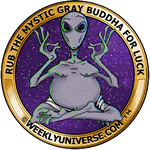
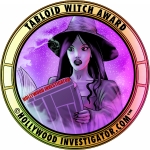
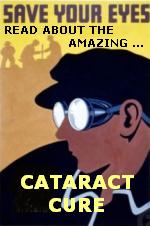

|
|
SHOCKING TRUE STORY: The Rise and Fall of Confidential,
by Henry E. Scott.
Before the supermarket tabloids of the 1960s, before the National Enquirer was covering Elvis, there was Confidential magazine. Founded in 1952, the magazine was effectively destroyed by a 1957 criminal libel trial in California, instigated by the Hollywood studios. Cowed and weakened, the magazine continued publishing until it folded in 1978. It was later to serve as inspiration for the book and film, L.A. Confidential. |
 |
"I
WATCHED A WILD HOG EAT MY BABY!" A Colorful History of Tabloids and
Their Cultural Impact, by Bill Sloan.
This
extensively-researched history of American tabloids was released in 2001. A critical year; since
1999 all major tabloids (Enquirer, Star, Globe, Examiner, Mira, Sun, Weekly
World News) have been under single ownership. Tabloid critics lament
this has undermined the tabloids' traditional competitiveness, and significantly
altered their editorial policies and news coverage. Author Bill Sloan
was an editor at the Globe and Enquirer, and a Pulitzer-nominated reporter
for the Dallas Times-Herald.
|
 |
THE
UNTOLD STORY: My 20 Years Running the National Enquirer,
by Iain Calder.
Calder
relates how he began in British journalism in the 1950s, became the Enquirer's
London bureau chief, then joined the tabloid in the U.S. in the 1960s.
By the 1970s he was Generoso Pope's right-hand man. A biography rather
than a history, but Calder was eyewitness to the key editorial decisions
during the Enquirer's growth and evolution. Naturally, it's full
of fascinating inside-the-newsroom stories and gossip.
|
 |
SECRETS
OF A TABLOID REPORTER: My Twenty Years on the National Enquirer's Hollywood
Beat, by Barbara Sternig.
Author
spends much time gushing over herself and her exciting life. She's
disingenuous, dishing dirt on celebs, then claiming she admires them. And she pulls punches. She worked for the Enquirer from 1975-95,
yet concentrates on 1970s celebs now safely dead: Frank Sinatra, Richard
Burton,
Tammy Wynette. Blurbs from B-list celebs and players further indicate
that she pulls punches. But she does provide useful info on tabloid undercover
reporting techniques.
|
 |
GROSSED-OUT
SURGEON VOMITS INSIDE PATIENT! An Insider's Look at Supermarket Tabloids,
by Jim Hogshire
A critique
of
tabloid coverage from a Left deconstructionist perspective. Hogshire
believes tabloids are Rightist institutions that reinforce the "traditional
patriarchal power structure." E.g. tabloids' "Rags-To-Riches" tales
support the notion that anyone can succeed under capitalism if they are
honest and work long hard hours. Tabloids' "fat obsession" reinforce
oppressive sexist standards of beauty. And "Fall of the Mighty" stories
alleviate class antagonisms by assuring working class readers that the
rich
and powerful are always punished for their greed and wrongdoing. Hogshire
also speculates about the tabloids' CIA and Mafia ties in the 1960s. A short (147 pages), lively, and informative book despite its biases, by
a former tabloid writer (who bites the hand that fed him). Released
in 1997.
|
 |
POISON
PEN: The True Confessions of Two Tabloid Reporters,
by Lysa Moskowitz-Mateu & David LaFontaine.
A husband-and-wife
team (since divorced) of tabloid reporters recount their adventures. Breaking
into a hospital for the first photos of Madonna's new baby, interviewing
Dana Plato after her arrest, participating in a Gulf War- sized tabloid
operation to infiltrate Liz Taylor's wedding. Names are named, and
their book is lively and entertaining. Yet one senses the authors
are being disingenuous, putting the best spin on their own motives and
behavior, while hypocritically distancing themselves from past employers
and coworkers. Another case of former tabloid writers biting the
hand that fed them. Released in 1996.
|
 |
RABID
NUN INFECTS ENTIRE CONVENT: And Other Sensational Stories from a Tabloid
Writer, by Tom D'Antoni.
Others
have written about working for the National Enquirer or Star, but this
is the first "insider account" by a writer for one of the "parody tabloids." The author wrote freelance pieces for The Sun (similar to the Weekly World
News). He didn't earn much and eventually "exposed" the tabloids
on Oprah's TV show by admitting he invented all his stories. Oprah
was likely upset by the Globe's stories on her (as revealed in Poison
Pen), but "exposing" The Sun hardly discredits the Globe or other non-parody
tabloids. Most of this book is the author's unedited Sun stories,
interspersed with commentary about how he got his idea, tales of working
for Sun editor Vader, etc. Released in 2005. 108 pages.
|
 |
FOR
ENQUIRING MINDS: A Cultural Study of Supermarket Tabloids,
by S. Elizabeth Bird.
Unlike
the above writers, Bird is not a former tabloid "insider," but an academic:
assistant professor of humanities and anthropology at the University of
Minnesota. She relates much of the same tabloid history and categories
as Hogshire (both are hobbled by having released their books before the
1999 mergers). After interviewing tabloid editors, writers, and readers,
Bird analyzes tabloid stories within the context of folklore theory. She claims that tabloid readers are savvier and better-educated than is
assumed, and that working class readers (as much as upper class readers)
realize that many tabloid stories are false or exaggerated. Released
in 1992, by the University of Tennessee Press. An easy read, despite
its academic author and publisher.
|
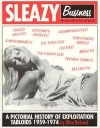 |
SLEAZY
BUSINESS: A Pictorial History of Exploitation Tabloids 1959-1974,
by Alan Betrock.
The
1960s were a Golden Age for tabloids. Over 40 were published at one
time, some very marginal and lasting only a few issues. This oversized
book is mainly an anthology of lurid, black & white frontpage covers,
one per page. The text is scant but interesting. Generously
illustrated
(naturally), and lots of fun! A great book for fans of gonzo psychotronic
subculture. Released in 1996. 128 pages. |
|
Smash His Camera,
directed by Leon Gast.
A 2010 documentary about legendary paparazzi pioneer Ron Galella. "Famously and successfully sued by Jackie Onassis, and slugged just as famously and successfully by Marlon Brando, denounced from the pulpits of punditry for decades, Galella has been a man easy to hate. But whether he can be blamed for sparking the current celeb-ysteria, he certainly created a body of work that is historically irreplaceable." -- Mary McNamara, Los Angeles Times. |
|
No Pictures,
by Ron Galella.
A book by legendary pioneer Ron Galella (featured in the film, Smash His Camera). If you loved the true-life movie, and want to read more -- in Galella's own words, this is his book. Released in 2008. 212 pages. |
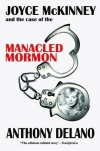 |
Joyce McKinney and the Case of the Manacled Mormon, by Anthony Delano
Porn star Joyce McKinney kidnapped and enslaved a Mormon missionary -- because she fell in love with him! A true story that was prime tabloid fodder in the 1970s. This book has far more information about McKinney's criminal trial, and its tabloid coverage, than about her actual crime -- the details of which remain in dispute to this day! First published in 1979, this 2009 reprint has additional "where are they now" material. 168 pages. Also see the documentary, Tabloid.
|

|
TABLOID
LOVE:
Looking for Mr. Right in All the Wrong Places,
by Bridget Harrison.
True-life
story of a British journalist who crossed the Atlantic to work for the
New York Post. She ended up writing a column about her love life.
One critic gushed: "A real-life Bridget Jones meet Sex and the City." I've never seen either of those, so I can't say. On the plus side,
she includes her experiences writing and reporting for the Post on matters
other than her love life, such as her interview with a man who just lost
his wife during a Christmas hit-and-run accident, which made her feel ghoulish. I'd have preferred more of the latter, and less personal love life stuff. Worth a look for some insight into the inner workings of New York tabloid
journalism.
|
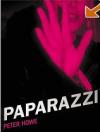
|
Paparazzi,
by
Peter Howe.
Huge
trade paperback. Lots of splashy color photos sampling the work of
paparazzis, but also informative text of the history of paparazzis from
early Hollywood to today (2005). 176 pages.
|

|
DISH:
How Gossip Became the News and the News Became Just Another Show,
by Jeannette Walls.
Despite
the "dishy" title, this is a detailed history of personality journalism
in America from about the time of Louella Parsons & Hedda Hopper to
Matt Drudge & Monica's semen-stained dress. Topics include Confidential
magazine, Walter Winchell, Rona Barrett, Liz Smith, Night Beat, 60 Minutes,
Marilyn Monroe & the Kennedys, the death of Elvis Presley, People magazine,
Barbara Walters, Geraldo Rivera, Carol Burnett's lawsuit vs. the National
Enquirer. Several chapters on the Enquirer and Pope, including material
on OJ and Princess Di. Readable and enjoyable, with a good index
and surprising revelations.
|
 |
PAPARAZZI
Vol 1
DVD
documentary that follows paparazzi "Louie D." following celebs. The
DVD claims that "Louie D." is a "world famous" celebrity photographer. A reasonably insightful "inside look" at the life of a paparazzi -- but
isn't it ironic that paparazzi now imagine themselves to be celebs in their
own right?
|

|
PAPARAZZI
Vol 2
Paparazzi
"Louie D" insists on extending his own 15 minutes of fame with this sequel
DVD.
|
|
|
"Hollywood Investigator" and "HollywoodInvestigator.com" and "Tabloid Witch" and "Tabloid Witch Award" trademarks are currently unregistered, but pending registration upon need for protection against improper use. The idea of marketing these terms as a commodity is a protected idea under the Lanham Act. 15 U.S.C. s 1114(1) (1994) (defining a trademark infringement claim when the plaintiff has a registered mark); 15 U.S.C. s 1125(a) (1994) (defining an action for unfair competition in the context of trademark infringement when the plaintiff holds an unregistered mark). All content is copyright by HollywoodInvestigator.com unless otherwise noted.
|
|
